NASA’s Juno mission has obtained measurements that finally say just how deep the Great Red Spot goes.

NASA / JPL-Caltech / SwRI / MSSS / Gerald Eichstadt / Justin Cowart
Just how far down does Jupiter’s iconic Great Red Spot go? The deep roots of the centuries-long storm could be a clue to its longevity, according to new results announced by the team behind NASA’s Juno mission.
Previous work using the microwave radiometer of NASA’s Juno spacecraft, still zipping around the giant planet every 53 days, probed the depths of the Great Red Spot. But while microwaves can help scientists peel back the top cloud layers, the microwave observations could only show that the Great Red Spot is still going strong 240 kilometers (150 miles) below the cloudtops.
Now, a study in the October 28th Science now puts a bottom limit to its depth. Juno scientist Marzia Parisi (NASA’s Jet Propulsion Laboratory) led an effort utilizing two Juno passes that had the spacecraft zipping right over the Great Red Spot. The team also analyzed data from another 10 passes.
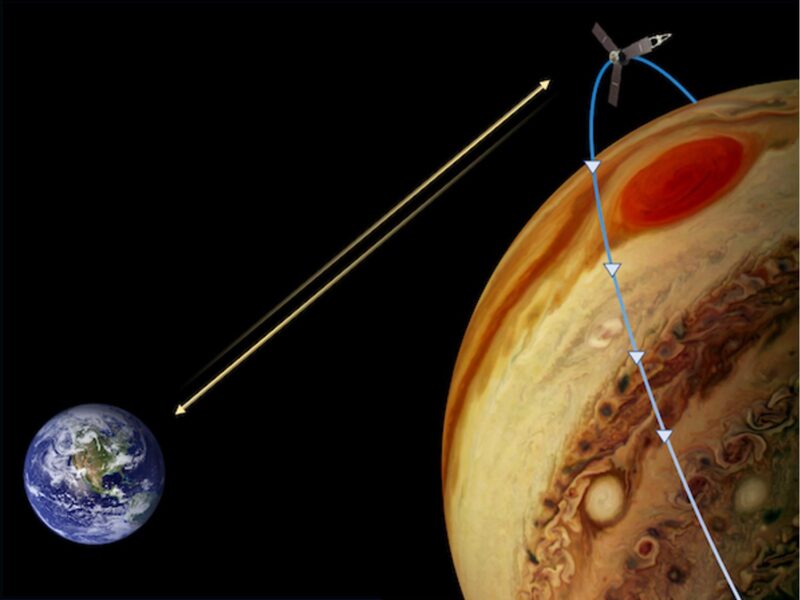
NASA / JPL-Caltech / SwRI
Flying at about 130,000 mph (59 km/s) when at its closest, the spacecraft’s path changed ever so slightly because of the uneven distribution of mass in the clouds below. By measuring deviations to Juno’s expected path to within 0.01 millimeter per second, researchers were able to peer deep within the planet.
Parisi and colleagues report that the Great Red Spot extends at most 500 km down. “Most of scientific community was thinking the Great Red Spot was shallow,” Parisi says. “We were surprised that it goes so deep.”
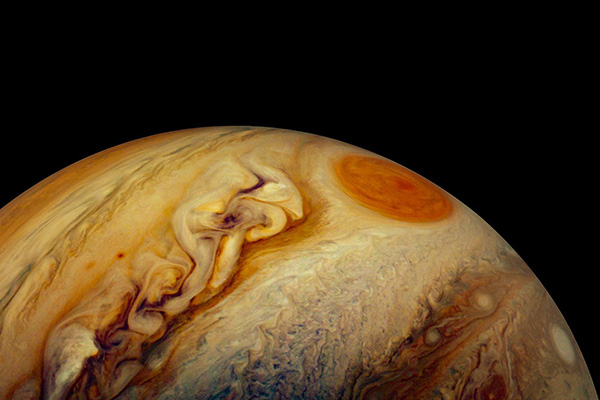
Image data: NASA/JPL-Caltech/SwRI/MSSSImage processing: Navaneeth Krishnan S CC BY
Despite shrinking over the past few decades, the Great Red Spot is still wider than Earth’s diameter. So the storm itself is somewhat pancake-shaped — just a thicker pancake than scientists had expected. For context, Jupiter’s stripes, the brown-red belts and whitish zones, extend much deeper, down to about 3,000 km, or about 4% of the way to the core.
Nevertheless, the unexpected depth means that the pumpkin-colored vortex is rooted beneath the water condensation layer, indeed beneath the entire cloud layer, and well beneath the reach of sunlight. The finding gives scientists food for thought as they puzzle over the mechanisms that might drive the storm.
Storms Aplenty
The visible view was captured by the Wide Field Camera 3 on the Hubble Space Telescope, while the infrared image comes from the Near-Infrared Imager (NIRI) on the Gemini North telescope in Hawaiʻi. The images shown here, taken on January 11, 2017, were part of a longer campaign to track weather patterns on the planet.
While the most obvious of Jupiter’s storms, the Great Red Spot is far from the only one. Amateur astronomers can see on the order of 100 storm-like features on the king of planets, and Juno’s close-up view reveals on the order of 1,000 cyclones and anti-cyclones, pop-up clouds, and brown barges dotting the planet’s surface.
In a separate article in the October 28th Science, Juno’s principal investigator Scott Bolton (Southwest Research Institute) and colleagues showed that these other swirls on Jupiter can also run deep, though not as deep as the Great Red Spot. They extend to average depths of 100 km.
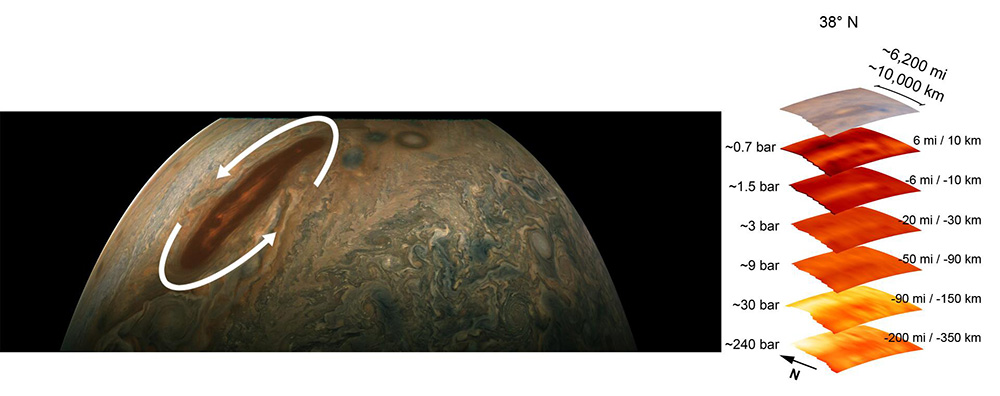
Image data: NASA / JPL-Caltech / SwRI / MSSS; Image processing: Gerald Eichstädt CC BY
However, Bolton noted at NASA’s press conference that the Great Red Spot is not necessarily the deepest of all of storms — the long-lasting cyclones at Jupiter’s poles could also be in competition for the title.
“Jupiter’s cyclones affect each other’s motion, causing them to oscillate about an equilibrium position,” says Juno co-investigator Alessandro Mura (National Institute for Astrophysics in Rome). “The behavior of these slow oscillations suggests that they have deep roots.” Mura led a study of the polar cyclones that appeared in the July 28th Geophysical Research Letters.
The measurements indicate that all the storms, not just the Great Red Spot, are rooted in regions out of reach of sunlight and the water condensation cycle, two processes known to drive storms on Earth. There might be small-scale processes at work, such as vertical winds or rain or hail of something other than pure water. The storms’ depths might also indicate that the top weather layer is connected in some way to the planet’s interior.
Fortunately, the Juno mission should have plenty more time to explore the mysteries within Jupiter. After more than 5 years orbiting the giant planet, and with 37 close passes under its belt to date, it’s ready for more.
NASA recently approved an extended mission that will take Juno to September 2025 if all holds up. So far the spacecraft is doing well despite the dangerous energetic-particle environment within Jupiter’s magnetosphere, in part due to the longer and wider orbits than were originally planned. Bolton adds with a grin, “The shields are holding.”
 1
1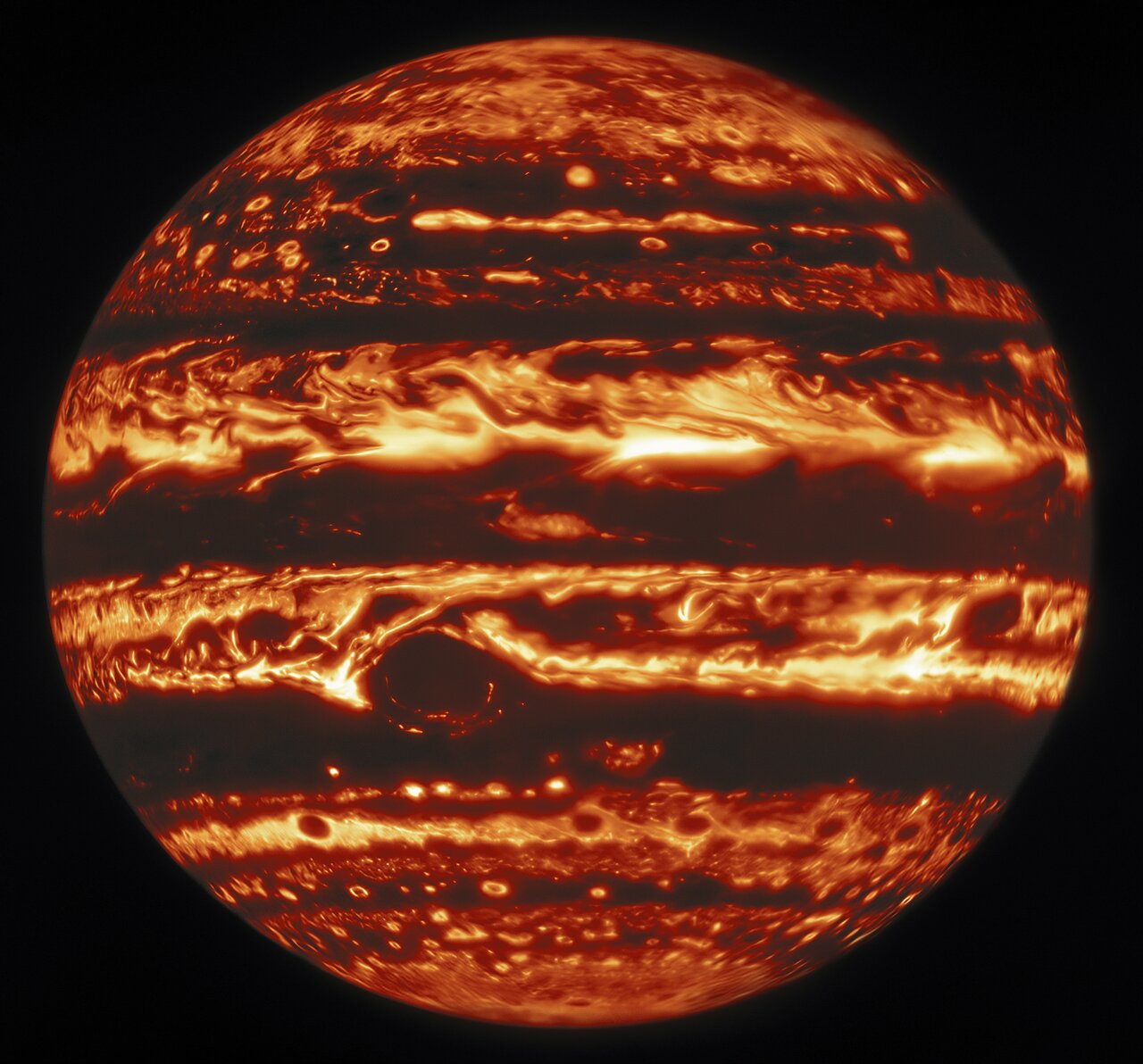
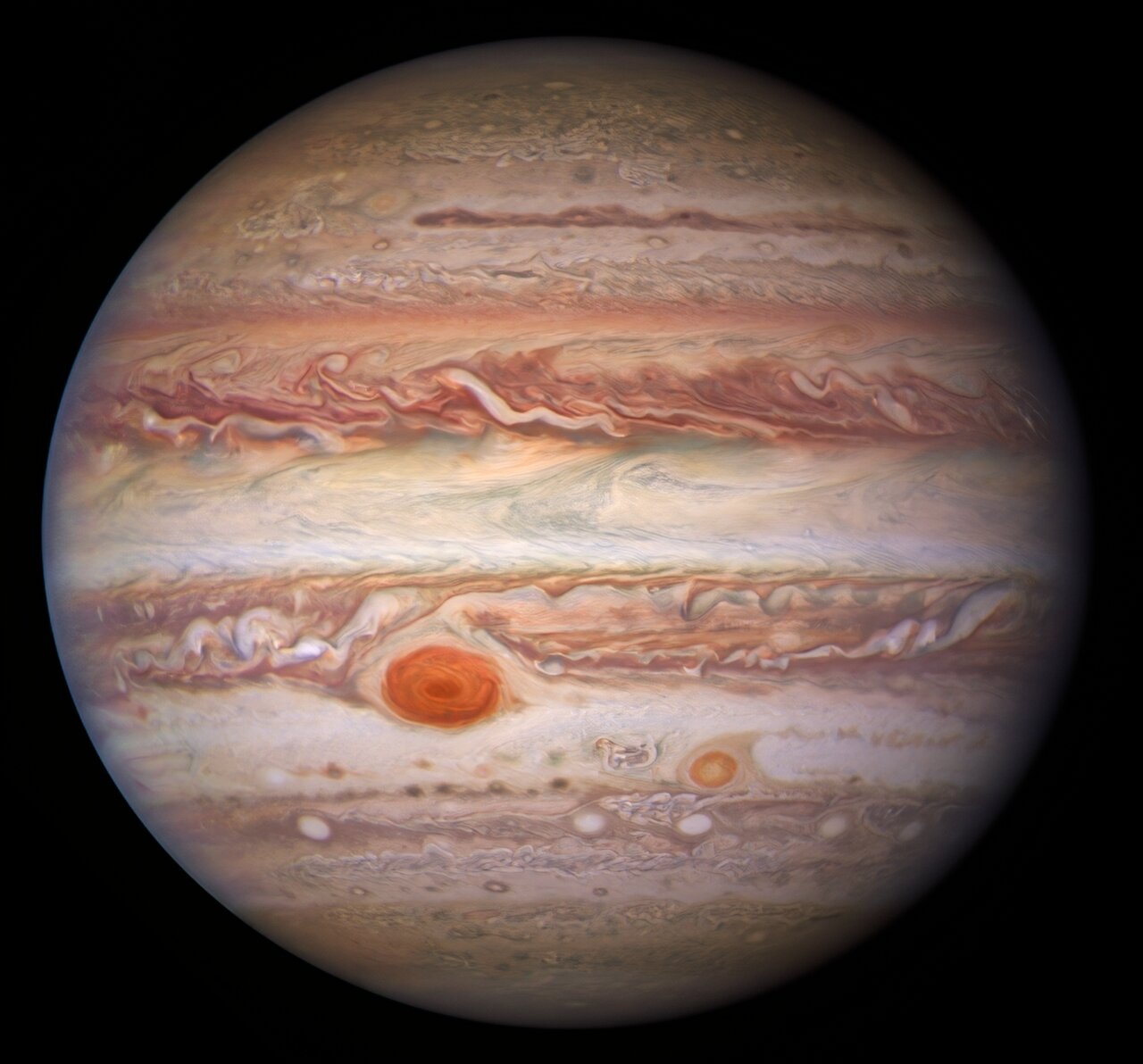










Comments
peterdusher
October 30, 2021 at 2:55 pm
Clues to the cause of Jupiter's Great Red Spot are its depth to perhaps 500 km below the cloud tops, which is well below the reach of sunlight and the water condensation cycle; its longevity, which means it may be connected "in some way" to the planet's interior; and that it is an anti-cyclone, which means it is a high pressure storm. An hypothesis that accounts for these characteristics could be that, buried beneath storm, is the core of a planet that collided with Jupiter and which, being dominated by metals, conducts heat from the interior preferentially outward in the spot's direction.
You must be logged in to post a comment.
You must be logged in to post a comment.